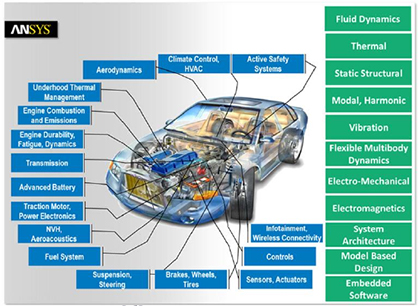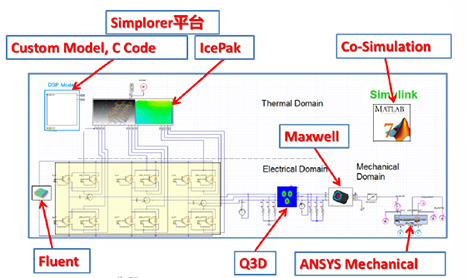The new energy vehicle industry in China started in the early 21st century. In 2001, the research project of new energy vehicle was listed among the 863 major science and technology issues in the fifteenth issue of the state publishing. And the strategy of starting with gasoline vehicles, like hydrogen cars, was planned as well. Since the 11th five-year plan, China has developed a series of strategies of energy saving and new energy vehicles. The government has paid great attention to the research and development and industrialization of new energy vehicles.
Under the pressure of energy and environmental protection, new energy vehicles will undoubtedly become the developmental direction of future automobiles. During the period of the 12th five-year plan , Chinese new energy vehicles will officially enter the industrialization development stage: from 2011 to 2015, it’s the industrialization stage. The new energy city buses, hybrids and small electric vehicles has been promoted in the whole society. During the period of the 13th five-year plan (2016-2020), China will further develop new energy vehicles, during which multi-energy hybrid vehicles, plug-in electric vehicles and hydrogen fuel cell vehicles will gradually enter into ordinary households.
At present, the application of new energy vehicles domestically and abroad has been developing continuously and the research and development has been deepened constantly. Key parts and systems of electric drive such as drive motor, power battery system, IGBT and controller have always been the hot spots, focuses and difficulties in the research of new energy vehicles. Compared with the advanced level of foreign countries, the research on new energy vehicles in China still has a big gap in these aspects. The design and virtual simulation of new energy vehicle are very challenging, which needs to be practiced continuously.
New energy vehicle system is relatively complex, and the design process involves multiple fields, including electromagnetics, control system, power electronics, electro-machinical, fluid dynamics, thermal, embedded software and other different fields, as shown in figure 1. It involves several design departments, including design assembly department, motor body department, control system department, battery design department, mechanical design department, etc. The interdisciplinary design of the whole new energy vehicle increases the difficulty of the design. Different departments have different concerns and different levels of requirements. In conclusion, how to consider the performance of each key point comprehensively, how to design the complex new energy vehicle system comprehensively, how to coordinate the design, and how to solve the design problems of multiple-domain physical are all complex tasks.

Compared with traditional cars, new energy vehicles have stricter design indicators. At present, the power battery system of new energy vehicles severely limits the driving distance. To overcome this difficulty, the reduction of the weight of each part as much as possible should be taken into considerations when designing the new energy vehicles, in order to reduce the volume and improve the efficiency.
For the convenience, reliability and comfort of new energy vehicles, accurate design of radio transmission system, battery pack modeling and thermal management system, motor and motor control system is required. At the same time, the number of electronic devices inside the new energy vehicles has been greatly increased. In the process of redesign, the problem of mutual interference between various electronic devices in cars, namely EMI/EMC problem, and the problem of heat dissipation and vibration of electronic devices should be fully considered.
Similar to other advanced system design processes, the design process of new energy vehicles is conducted step by step from the conceptual design, the system design, to the subsystem design and component design. During the validation phase, integration and validation are required from the order of components, subsystems, and systems. In order to save developmental time and design cost, this design and verification process of new energy vehicles will not adopt all real physical prototype design and testing, but adopt some real or all virtual level design and verification, namely virtual design and virtual testing.
In the process of virtual design and virtual testing, different departments have different requirements on the model level. More behavioral models will be used at the overall design level, and more accurate physical models will be used at the component design level. From the physical model to the behavioral model used in the system simulation, the simulation platform needs to adopt better model reduction and cooperative simulation technology.
In the process of the component design in the new energy vehicles, it is often necessary to consider not only the performance in a single physical field, but also the comprehensive performance of multiple-region physical, such as electromagnetism, structure, ventilation and heat dissipation, so the design of a platform is required to meet this design requirement.
The new energy vehicle is a complex product composed of thousands of parts. In the process of simulation design and development, it involves complex problems in multiple physical fields such as fluid, structure, temperature, electromagnetic and control. At present, ANSYS simulation technology is widely used in the design of new energy vehicles, as shown in figure 2:

In view of the strict design indicators of new energy vehicles and the complexity of system design, its complex systems and products require solutions to cover all physical fields and subject areas. ANSYS has provided with an overall digital virtual design solution including system design and multi-physical domain design.
The integration platform in the ANSYS system is dedicated to the performance prediction and analysis of systems and subsystems in electromechanical systems. It not only realizes the multi-level digital design from component to system, but also makes the system and components closely connected from the initial plan to the final plan, thus making the design process more reasonable. The ANSYS integrated simulation platform in multiple physical domains can comprehensively consider the electrical, electromagnetic, thermal, structural, fluid and other thermal properties of the whole system and its components. The design of a typical electric vehicle driving system is shown in figure 3.
EMI/EMC design is a special problem in mechanical and electrical system performance analysis. Based on circuit analysis tool and the electromagnetic field analysis tools, the sub-system of EMI/EMC in the integration platform interconnect and share the link of data. From the point of view of frequency domain and time domain, it realizes the PCB conduction and radiation disturbance control and electromagnetic compatibility design, chassis cabinets shielding effectiveness design, and the typical EMI/EMC analysis of systems and circuit simulation, combined with the PCB, wire harness, nonlinear digital components, analog parts and radio frequency devices.

Simulation of basic physical system is the basic tool of modern electromechanical system design, and also the cornerstone of the multi-physics domain research and development platform of all digital electromechanical system. The basic physics simulation system is used to solve all the key problems involved in the development of new energy vehicles, including structural analysis problems, ventilation and heat dissipation problems, electromagnetic analysis problems, vibration and noise problems, motor control problems and EMI/EMC problems. From the perspective of robust design, the basic physical simulation system also includes multi-objective optimization, sensitivity and reliability analysis, and statistical analysis. Through the integration with the aforementioned basic physical simulation system, the stability design would be carried out.
ANSYS multi-physics domain simulation solutions include electromagnetic analysis, structural analysis, vibration analysis, fatigue analysis, noise analysis, fluid analysis, thermal analysis, multi-objective optimization analysis, etc.
Multi-physics domain collaborative optimization platform is a basic platform for the accurate design and optimization of the underlying components of electromechanical systems. The collaborative design is a complicated physical problems, restraining and influencing one another. This kind of complex synergy with fundamental physics can meet the precision analysis of a single physical domain, and the collaborative optimization platform integrates these different physical domain analysis systems and tools to realize data sharing, functional interconnection between different physical field tools and form a unified design environment with similar operations. The analysis systems and tools in these different physical domains can carry out real multi-physical system analysis of individual components within the platform at the same time, and integrate multi-physical mutual constraints into the consideration of the development of virtual prototype. As a result, the virtual prototype is more realistic, as shown in figure 4:
